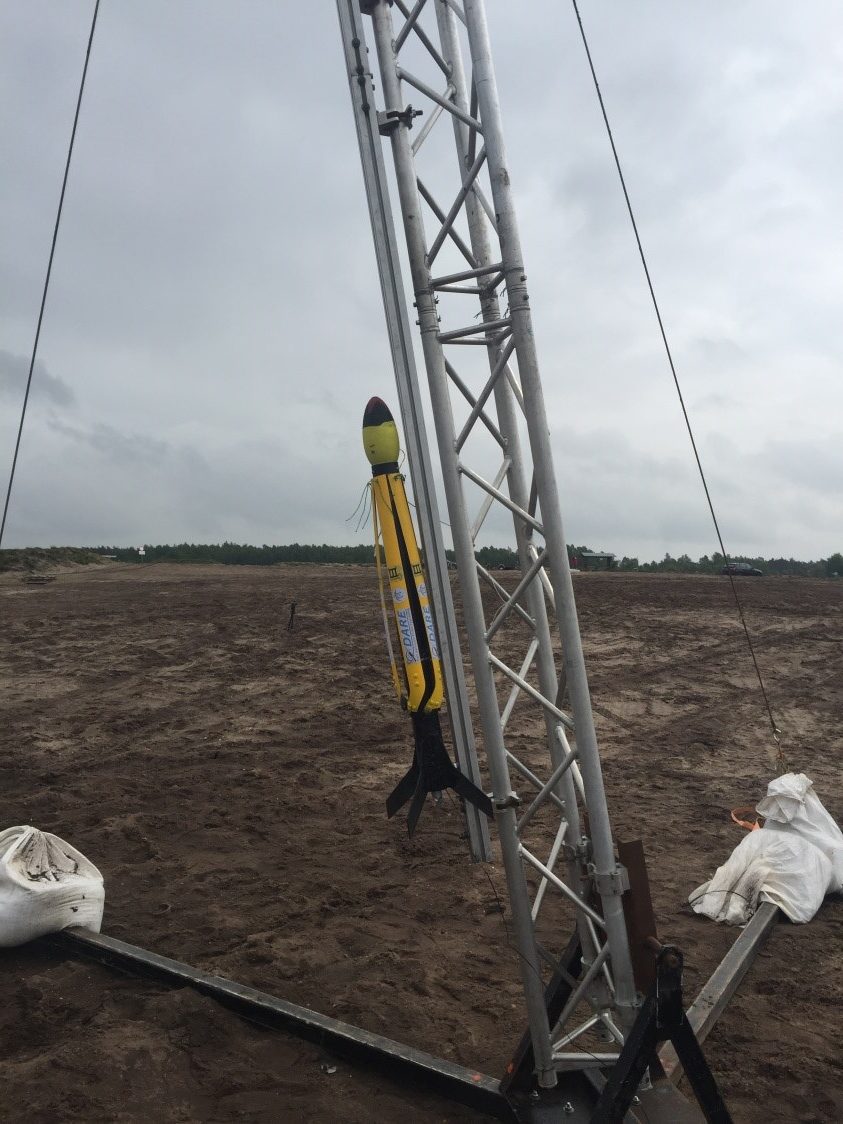
Friday the 20th of May 2016, Infinity & Beyond (I&B) succeeded in recovering a rocket with autorotation. After three years of hard work, their rocket called “3rd time’s the charm” had indeed the charm as it ascended straight to the sky and reached the apogee. Everyone on the ground could enjoy the electronics do their work and see the blades of the rocket open.
Immediately after, the rocket started spinning, initializing the autorotation recovery. Unfortunately, during the opening of the blades, one of the blades broke in half, which surprised the team. PVC was chosen as the blade material due to its flexibility and damage tolerance. Moreover, the deployment of blades occurred inside the time frame in which deployment was deemed safe. The team is assuming that there could have been a fault in the PVC material (the blade broke with a clean cut). Furthermore, if unaccounted velocities were taken into account, a better “safe” time frame could have been created, which could explain the additional stresses that might have been part of the cause.
With one blade shorter than the rest, the rocket was gyroscopically and aerodynamically far less stable then designed, and so it did enter a tumble several times during the descent. Either way, the blades were efficient enough to still make the rocket autorotate (while tumbling from side to side, which also adds drag from the body tube itself) and recover the rocket back in one piece.
Nonetheless, this launch is a huge moment for I&B, since they have been able to prove their work and are even able to offer the necessary corrections for a better descent performance. Moreover, this is the first rocket in DARE society using an alternative recovery system other than the typical parachutes!
Watch the whole launch and recovery of I&B here!
How to continue?
I&B is now preparing for the future since new members are coming in and old ones are going away. To make sure that knowledge about autorotation is not forgotten and to assure that the team can start off as strong as possible next year, I&B is busy writing a proposal that includes recommendations and ideas worth to investigate. The main idea that I&B would like to propose is the usage of the Magnus effect as a recovery system. In other words, can the application of rotating columns that makes use of the Magnus effect make a safer autorotation recovery system, applicable to larger rockets? The idea is to replace the blades with columns that are stored within the body tube until deployed like an antenna at apogee and then spun up by an electromotor which in turn create the necessary Magnus effect. Through this, the columns will produce lift and start the autorotation recovery. In avionics, this effect has not been used mainly due to its large amount of drag that comes with the production of lift. However, this is only a big bonus for a rocket recovery system.
There are several advantages to such a system. Firstly, the columns can be opened gradually, thus guaranteeing a safe deployment. Secondly, the lift production is not dependent anymore on blade length, but also on the amount of energy applied. Thirdly, the far greater inertia of the blades allows them to be stored inside the rocket. Last but not the least, there is a greater efficiency of lift production across the columns and there is the ability to make a controlled descent, which would result in changes in descent velocity or even in the flight path direction. The counter proposal of an autorotation system that would be able to deliver similar abilities is the application of helicopter blades with active pitch control. However, the complexity both structurally and aerodynamically is far greater and becomes highly impractical. Thus, I&B is hoping that the Magnus effect can be applied to make autorotation recovery more efficient, reliable and safe, while keeping simplicity. Hopefully, autorotation using Magnus effect columns can become a useful alternative to parachutes.


